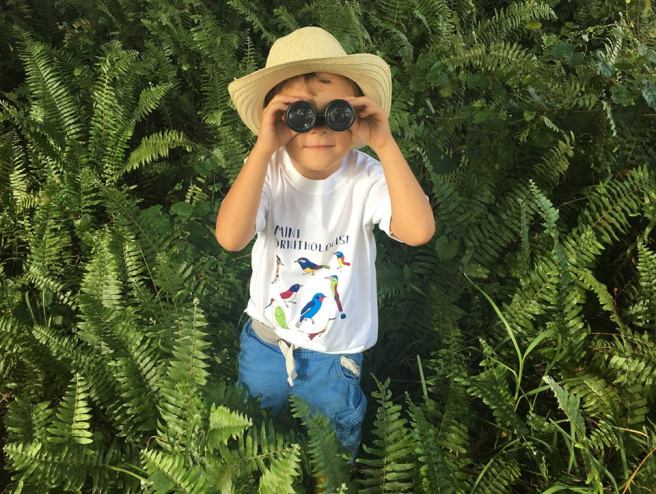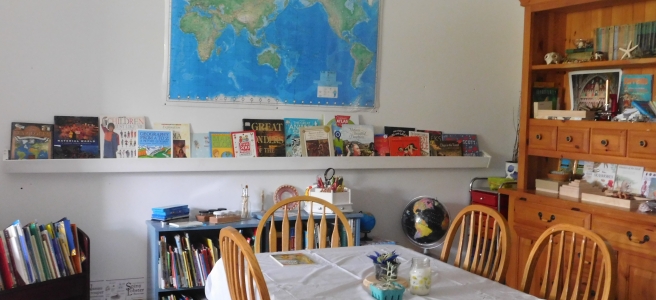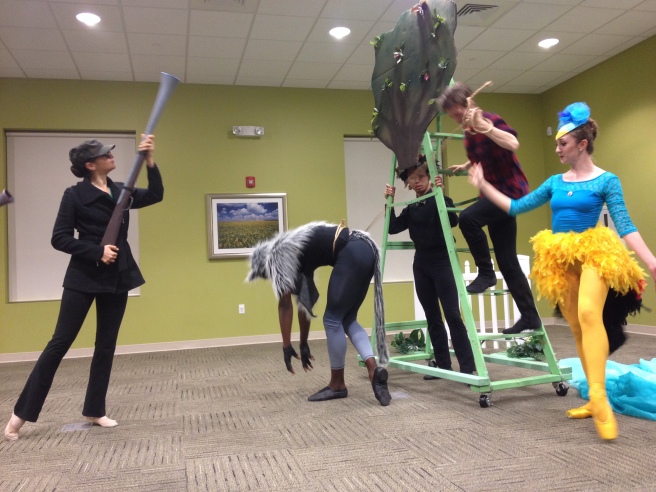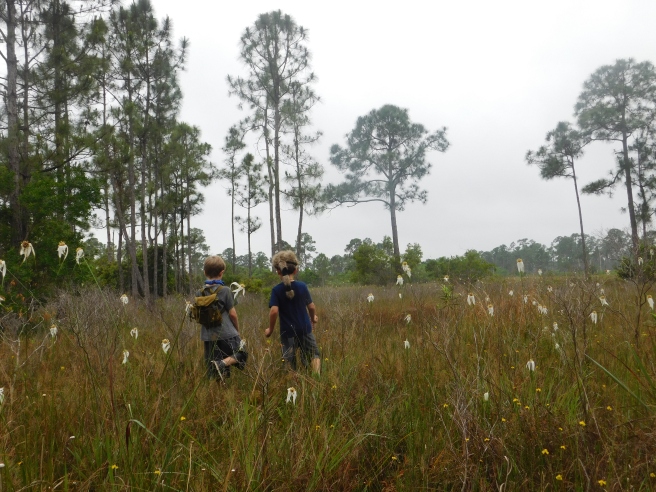
Hello friends! We are gearing up for the start of Exploring Countries & Cultures. We are due to kick off our new school year on June 6 and my explorers are chomping at the bit!
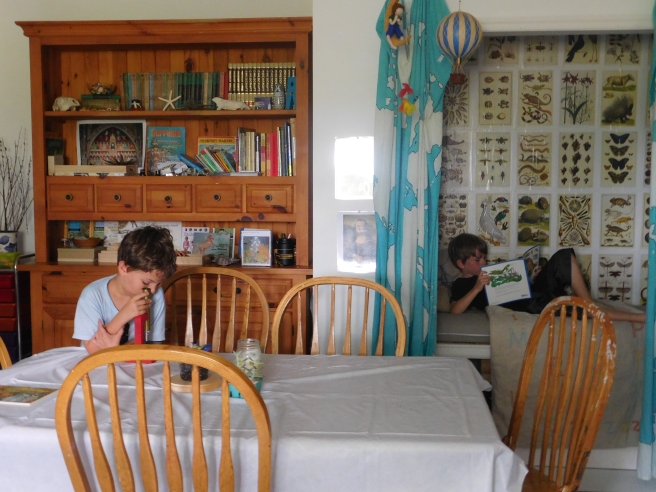
Homeschooling has become such a part of our daily lives that we ended up studying something every week this summer. I never asked the boys to do anything, it was entirely child led–which was wonderful! We ended up taking many, many nature hikes and explored several learning centers in our area. Both boys expressed sadness at the end of Adventures that we did not cover WW1, the Great Depression, WW2, the Civil Rights Movement, etc. So we spent some time covering those topics over the summer. We predominately used living books. Our favorite by far was, “Only a Dog: A Story of the Great War,” which you can find here.
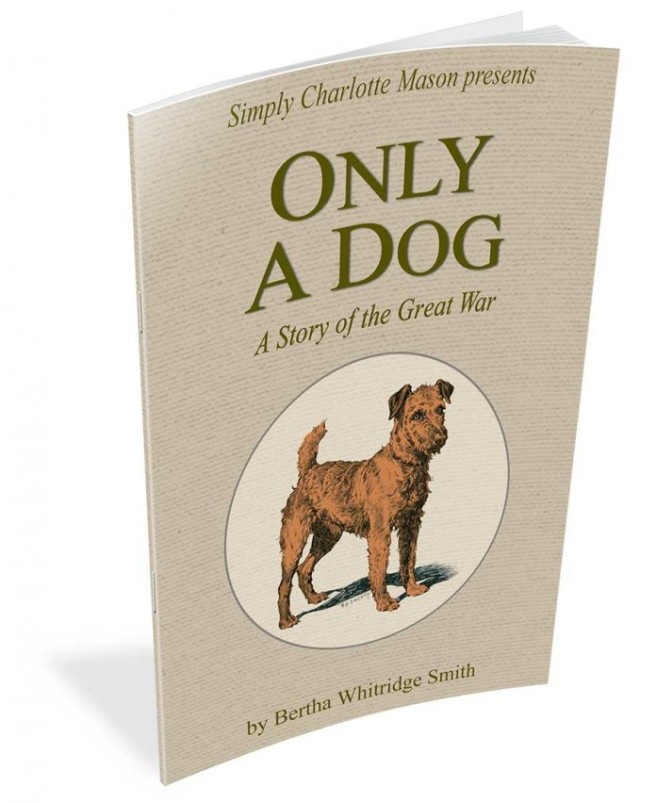
We also pulled a few lessons from Ann Voskamp’s “A Child’s Geography” just to whet our appetites for the coming school year. We are in the midst of making paper mache globes to hang in the classroom. The boys have maintained their interest in learning, explored topics of interest and kindled curiosity for the coming school year. I will be honest and say that if my boys arent building, exploring, discovering, playing, learning, SOMETHING!!!! ANYTHING!!!! then they are most definitely fighting and I am most definitely pulling heart out. Even though I needed a break this “summer,” I am more than willing to keep providing learning material just to avoid the hideous sound of four children arguing.
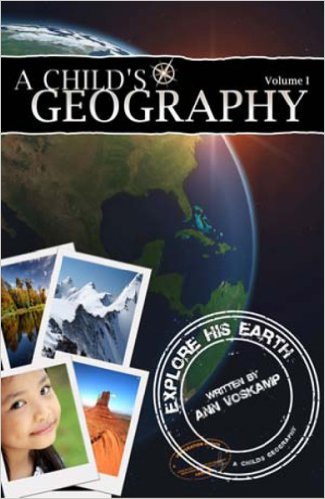
What have I been up to other than the promotion of world peace? Getting things organized for the school year. Our 3rd son has already begun his K year and things are progressing nicely. Our 4th son is in the last weeks of his curriculum, A Year of Playing Skillfuly by The Homegrown Preschooler. I am in the midst of planning our area practicum for Classical Conversations and gathering materials for my new group that begins class in August. I am so excited to be Directing this new group but I also know that my first callings are: Child of God, Wife to my husband, Mother to my children and Teacher to my children. With this in mind I began my planning by stripping back and trimming away all unnecessary fat. It is often hard to say no because there are many, many wonderful groups and tools and organizations out there. We are blessed to have so many options. As a family, we have prayed and we know where God is calling us and what kind of education He has set before us. Knowing that, we are staying the course and saying “No” where it needs to be said. I do this every year before I lay a finger on any piece of new curriculum. Trim the fat.

Here are the resources we will be using this year!
1) History, Geography, Bible
My Father’s World: Exploring Countries and Cultures
Pin it! Maps
Classical Conversations Cycle 2
2) Math
Saxon Math 3
Making Math Meaningful
Classical Conversations Cycle 2
3) Phonics & Language Arts
All About Reading Level 3 (8 yo with possible dyslexia)
Explode the Code 6 (7 yo)
Spelling Wisdom
Classical Conversations Cycle 2
Simply Charlotte Mason Language Arts Handbook
Beautiful Feet Books Horse Study
4) Foreign Language
Latin Cristiana 1
Classical Conversations Cycle 2
5) Fine Arts
Simply Charlotte Mason art packs
Piano
2nd semester- Guitar (8yo)
Saxophone (7yo)
Classical Conversations (tin whistle, orchestra study, composer study, artist study)
6) Handwriting
Classical Conversations Prescripts
7)Science
Classical Conversations
MFW Exploring Countries and Culture
Nature Study (TBD)
Beautiful Feet Books Famous Scientists Study
8) Handicrafts
leather work
crochet
knitting
candle making
card making
Morning Basket:
Mathematicians Are People, Too! by Luetta Reimer (Volumes 1 & 2)
Burgess Book of Animals
CC Geography
Brave Companions: Portraits in History by David McCoullough
Stories of the Nations by Lorene Lambert (Volume 1 & 2)
Hymn Study
Scripture Memorization: Ephesians 6
I know that looks like an enormous amount of work! But keep in mind that I have two boys in the same “grade” but not in the same place with learning. For example, we practice our CC memory work each day before math. We will skip count or recite equivalents, etc. Then we pull out our Saxon books and work through a problem set or we bring out our Waldorf notebooks and play with Math, depending on the day! If my eldest is struggling to grasp something in Saxon, we stop and use a more Waldorf approach to connect him to the concept. For language arts, my eldest struggles greatly with reading and has seen tremendous benefit from AAR program. My second born found Explode the Code at a friend’s house, begged me to buy it for him and has flown through the series by himself. He likes to do this when I work with his eldest brother. We approach our spelling and language arts using Simply Charlotte Mason. We need those short, focused lessons with a focus on mastery. Music and Art switch off every other day. Handicrafts are done during leisure time.
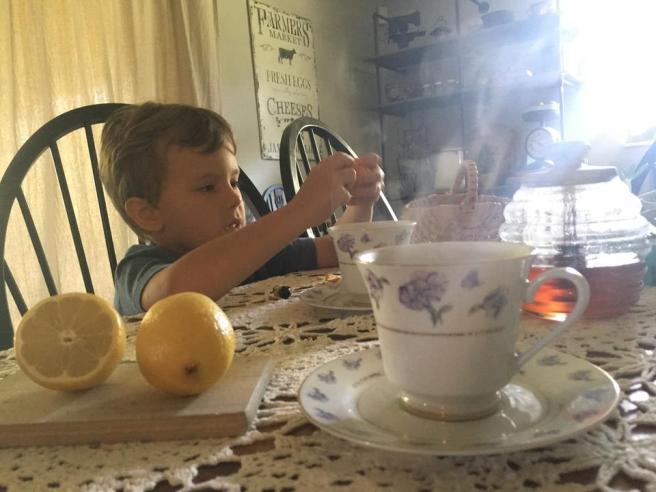
We begin our day with Morning Time. This is usually conducted over a relaxed breakfast with many cups of our favorite tea. First we go over the plan for the day in order to limit surprises. Is there a doctor’s appointment? Will we be visiting anyone? What are the expetations for that visit, etc? The boys then review their current geography work for CC, we read one poem or look at one piece of art and we sing one hymn. Those three things are done in a five minute window of time. Brief. Consistent. Next, we spend 10-15 minutes reading from one of the books listed above. We may finish them all this year, we may not. We just want an enriching story to begin the morning with a variety of subject that connects to things we are learning in the classroom that year. After reading, we spend a few minutes reviewing and learning our scripture passage for the year or we might write out a few cards of thanks or enouragement to friends. We close by singing the Doxology and moving over to the classroom. Again, real life is happening in between the sentences. Spilled tea, burnt toast, hurt feelings, etc. But we never ever ever skip morning time. I am so excited to read the books in our basket this year. I’ve heard great things about the McCollough book and Stories of the Nations in particular. We have a seperate book basket for the lunch hour but I havent quite readied our reading list for the year yet so I will post that once it is ready.
We work on a block schedule,which I have detailed here.
While the older kids are working on their assignments, the younger childer are hard at PLAY!
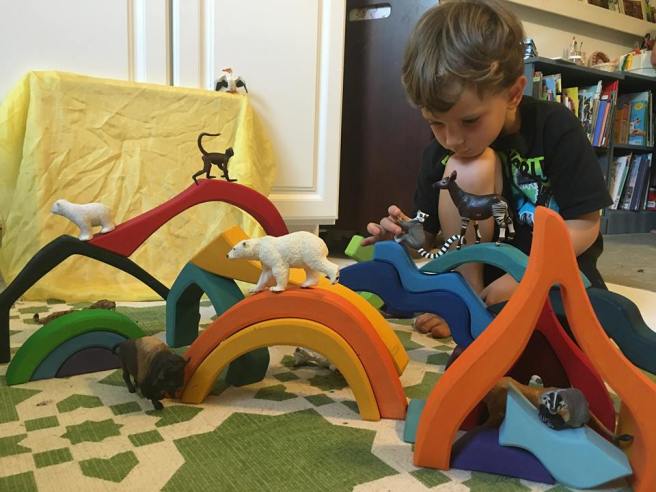

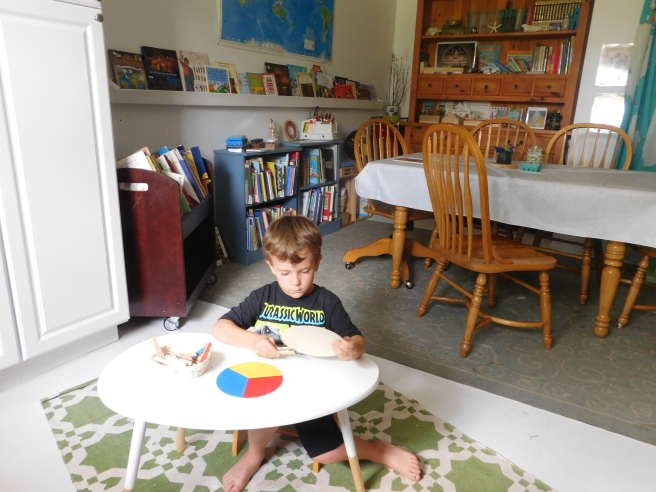
I have set up several small spaces throughout the room that I can change throughout the year for the younger two to play and work. We change toys out of the play stand every few weeks. We’ve also prepared a few other work boxes based on the various continents for the kids to play with (the older boys also work at these spaces too since they also love to play and explore). All school materials are left accessible to them. Hubby had this ginormous world map with the United States on the right hand side, which left the other continents intact, and features all longitude and latitude lines marked. Hooray for using things you already own! We are planning to display work from each continent around the map as the year progresses.

To the right of our book cart we have set up several small book cases with tons of books for them to handle as the need arises. Their school books are also tucked in these cases. On top of the bookcases are all the writing and art tools they use on a daily basis. We notebook nearly everything and I will be posting how we do this as the year progresses. I purchased all of their notebooks ready made here along with paint jars, watercolors, brushes and modeling clay. (Yes, long time readers that spy the rainbow boxes in the corner, I caved and got a chicken war cart of doom!)
I’ll pause here to mention two books on our gutter shelf that I am especially excited about this year.

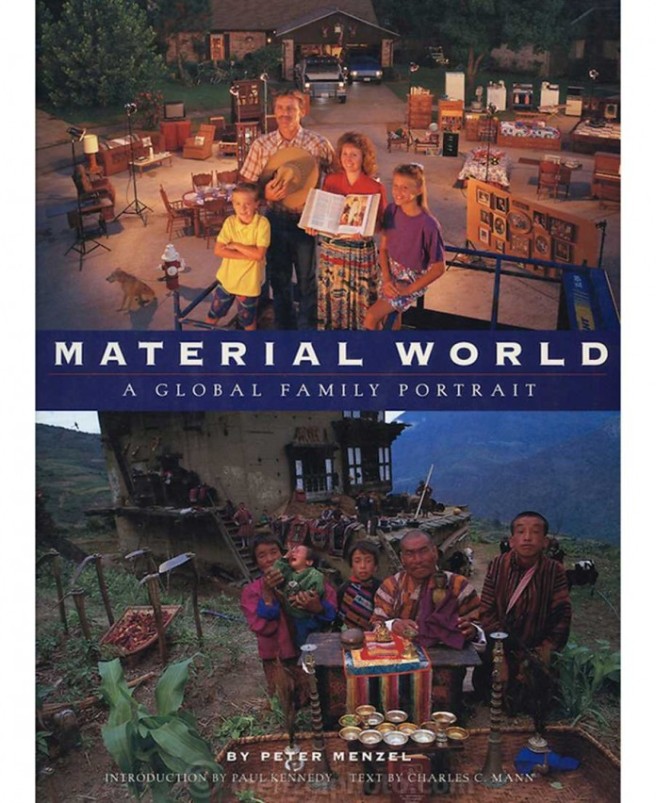
We plan to incorporate these books with ECC!

Above is our Pin it! Maps Geography station. All the pin maps, reference maps,control maps, pins, prompts, etc. are stored on these shelves for easy access. Have you visited pinitmaps.com yet? The free resources section is a dream! Free biome cards, land form cards and much more. Check it out! The boys can grab their preferred map along with the corresponding pins and cards and set to work! Read more about these fantastic maps here and here.
Thats the whole kit and caboodle my friends. I’ll post our weekly schedule a week or so before we begin the school year so you can take a peak at how we balance things. See you soon!
